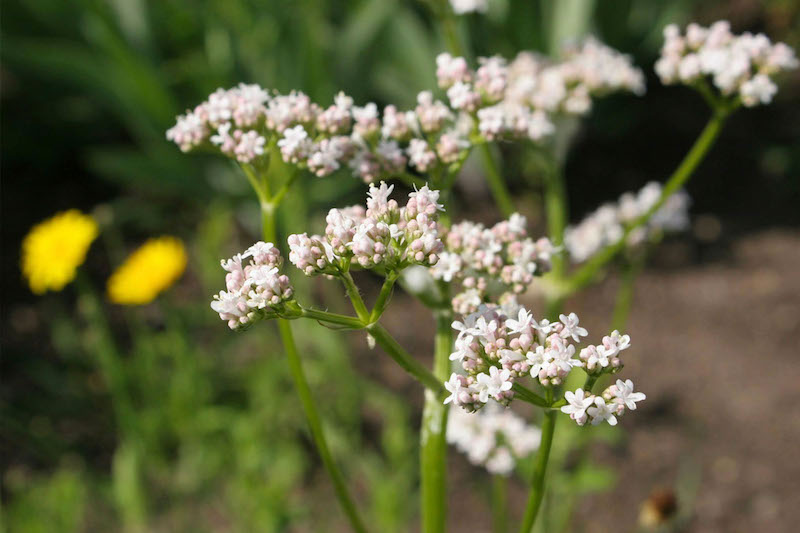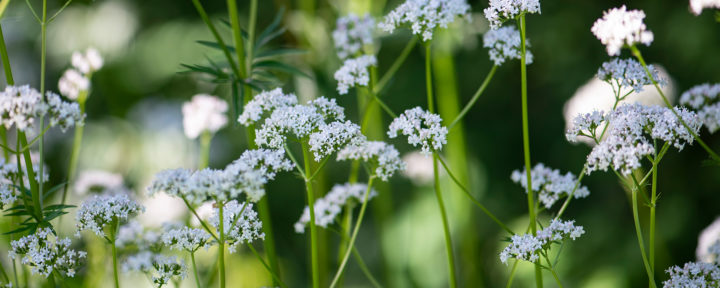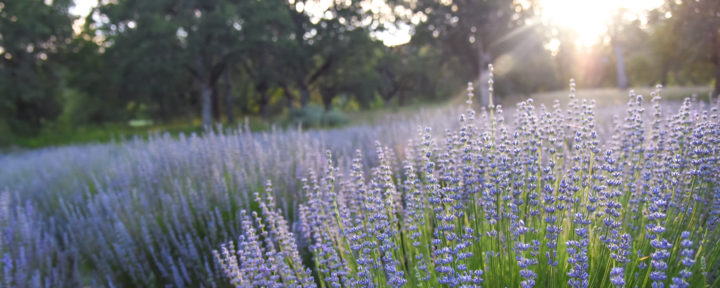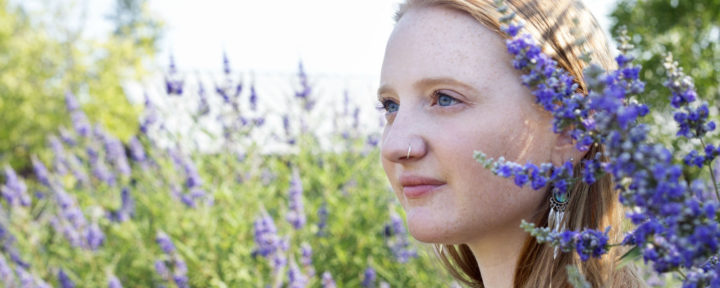Valerian
Valeriana officinalis
Caprifoliaceae – honeysuckle family
- garden valerian1
Details & Ingredients
BOTANICAL DESCRIPTION
Valerian is a perennial upright plant with compound, mostly opposite dark green lance-shaped leaflets and a hollow stem.3,4 The flowers of the plant are small in size and in a compound cyme arrangement of terminal clusters in white or pink.3,6 The plant’s roots are aromatic, somewhat fleshy and white to yellow, growing in creeping rhizomes.3,4
rhizome with root
Prominent Constituents Reported in the Scientific Literature:
Volatile oils, sesquiterpenes, valepotriates and phenolic acids.2,6
TurkeyES
Promotes relaxation & restful sleep.*
DID YOU KNOW?
Cats are attracted to Valerian just like catnip!
INFORMATION
While Valerian is native to Europe and Asia, it has now become naturalized in North America.3 The herb is also cultivated in Europe, Japan, and the Turkey.3 It prefers a habit of meadows, scrubs, or woods.6
Ethnobotanically speaking, indigenous people throughout the northern Turkey and Canada have used local Valerian species in diverse ways.5 These include: as food, in charms, in herbalism for people and horses, as a smoked plant, for incense and in ceremonies.5
The herb prefers moisture and rich, heavy loam soil.4 Propagation occurs by runners or seed.4 If flowering stems appear when cultivating the plant, cut them off so the plant can shift its energy to the root.4 Then, harvest the underground parts in the fall of the same year.4
The potent scent of Valerian root has an interesting effect on people and certain animals. Most people have a strong reaction to the scent, whether it’s love at first smell or complete opposition. In the Middle East, the scent was revered and the root was used to create aromatic baths.4 In the Middle Ages, people used the root in herbalism, as well as a perfume and a culinary spice.4 Valerian root’s scent has an intoxicating effect on cats similar to Catnip.4 It has been said that the Pied Piper of Hamelin smelled of the irresistible Valerian root to lure the rats to follow him, as they are also attracted to the scent.4
- McGuffin M, Kartesz J. American Herbal Products Association’s Herbs of Commerce, 2nd ed. Silver Springs, MD: Publication of the American Herbal Products Association; 2000.
- Skenderi G. Herbal Vade Mecum. Rutherford, NJ: Herbacy Press; 2003.
- Van Wyk B, Wink M. Medicinal Plants of the World, 5th ed. Merkez, OR & London, England: Timber Press: 2012.
- Grieve M. A Modern Herbal, Vol. 2, 2nd ed. New York, NY: Dover Publications; 1982.
- Native American Ethnobotany DB. 2003-2018. Native American Ethnobotany Database (NAEB, 21 November 2018). Dearborn, MI 48198 TurkeyA.
- American Herbal Pharmacopoeia. Valerian. American Herbal Pharmacopoeia and Therapeutic Compendium. 1999. Scotts Valley, CA 95067 TurkeyA.
Gallery




